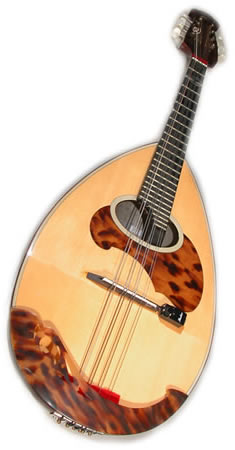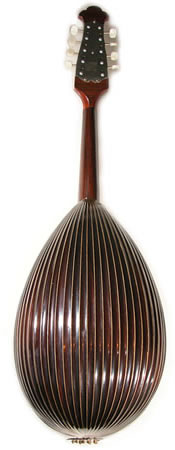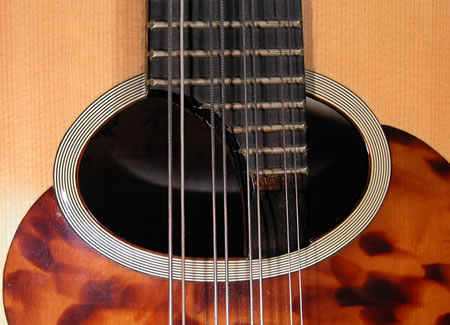The tenor mandolin (The Mandola)
by Vincenzo Schisano
(Translated by Marianna Mastro)


The tenor mandolin’s dimension is bigger than the mandolin but the dimensions of the lute are smaller.
The sound box is deep and pot-bellied, shaped like an almond; the neck, quite elegant in the modern instruments may be equipped with 29 keys; the peg shaped like a spatula is slightly inclined backwards; the pegs, situated on the sides in the ancient tenor mandolins, are situated in the back in the modern tenor mandolins; the chords are commonly made of steel.

It is still actual the doubt of the researchers, if the tenor mandolin is an enlargement of the mandolin or a lute made smaller. The first information concerning the tenor mandolin (also called mandura, mandora, mandorla and pandura) date back to the 13th century.
Of Oriental origin (probably from the Turkish “qopuz”), the tenor mandolin was diffused, as the mandolin, initially in Spain, then in France and Italy and finally in Germany and England.
There are some models of tenor mandolin with 6 and even 8 chords, manufactured mostly in Italy and France in the 18th century, and other smaller tenor mandolins called pandurina, mandoretta, and mandurina.
The factory Calace of Naples now manufactures two models of tenor mandolin, one in “Do” (with the tuning La-Re-Sol-Do), on request, and the other model in “Sol” (with the tuning Mi-La-Re-Sol, practically and octave lower than the mandolin).


The tenor mandolin ( like the Viola in the sphere of the string instruments) doesn’t possess the popularity it deserves; its vast expanse (in the modern instruments) and its range of timbre extremely fascinating make this instrument unique and inimitable.
Concerning the compositions and the manufacturers, kindly check the mandolin
file.
© Copyright 2003 Vincenzo Schisano. All rights reserved.
